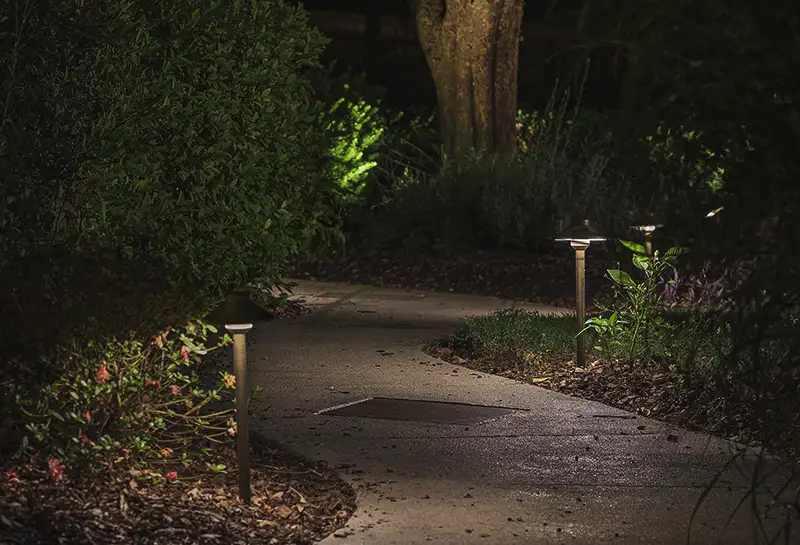Path lights play a crucial role in landscape lighting design, offering both functional and aesthetic benefits. These fixtures guide and illuminate pathways, ensuring safe navigation during nighttime hours. Selecting the correct path lights involves considering various factors to create a cohesive and visually appealing outdoor lighting scheme. In addition, exploring alternative options beyond traditional path lighting can provide unique design opportunities.
Functionality and Safety
Path lights serve a primary purpose of providing visibility and safety along walkways, driveways, and garden paths. When selecting path lights, consider their brightness, spread of light, and beam angle to ensure suffcient illumination for clear pathways. Opt for fixtures with a downward-facing light distribution to prevent glare and achieve even lighting along the path.
Aesthetic Considerations
Path lights also contribute to the overall aesthetic appeal of outdoor spaces. Choose fixtures that harmonize with the architectural style and landscape design. Consider the material, finish, and shape of the fixtures to create a cohesive look. Path lights can be sleek and modern, or they can mimic traditional lanterns for a more classic appeal. Balancing functionality and visual appeal is key to a successful landscape lighting design.
Energy Efficiency
Consider energy-efficient options for path lighting. LED path lights offer longevity, lower energy consumption, and reduced maintenance needs. Look for fixtures with adjustable brightness settings or integrated motion sensors to conserve energy while still providing adequate illumination when needed.
Alternative Options:
While path lights are a popular choice, there are alternative options that can add creativity and variety to your landscape lighting design. Bollard lights can provide a similar function to path lights while offering a different aesthetic. They are taller and provide a larger spread of light, making them suitable for wider pathways or areas that require more illumination.
Uplighting and downlighting techniques can also be utilized to indirectly illuminate pathways. Up- lights placed near trees or architectural features create a soft ambient glow that indirectly illuminates the path. Down-lights mounted on trees or overhangs can cast a gentle pool of light onto the pathway, creating a magical effect.
Conclusion
Choosing the correct path lights involves considering functionality, aesthetics, and energy efficiency. These fixtures not only provide safety and guidance but also contribute to the overall landscape lighting design. Additionally, exploring alternative options such as bollard lights or creative lighting techniques like uplighting and downlighting can add diversity and visual interest to outdoor spaces. By carefully selecting and designing path lighting, you can enhance the beauty and functionality of your outdoor areas, creating an enchanting atmosphere for both residents and visitors alike

